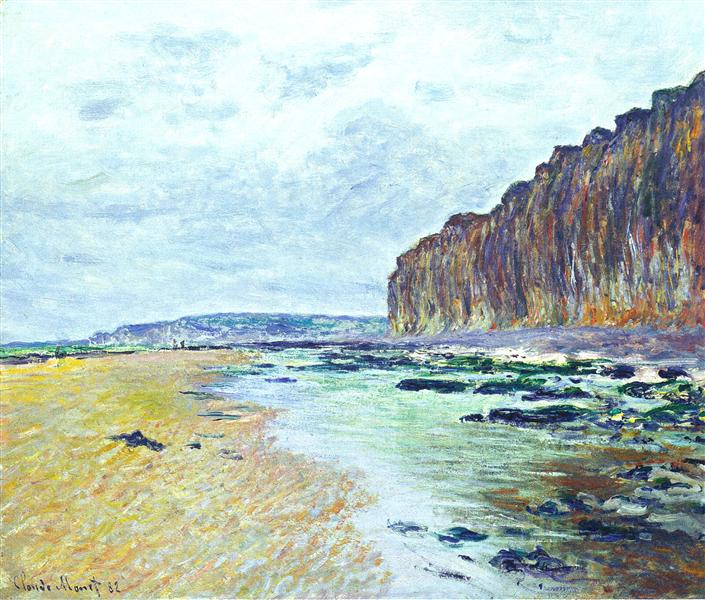Tanım
Claude Monet's painting "Low Tide at Varengeville 02", painted in 1882, is part of the evolution of Impressionism, an artistic movement that Monet helped define through his innovative exploration of light and color. In this work, the artist captures a specific moment in time, depicting the coastal landscape of Varengeville, France, where low tide reveals a fascinating and nuanced environment.
Monet opts for a composition that reflects his mastery in depicting nature. The scene is dominated by a palette of soft, vibrant hues that seem to dance with each other. The exposed sand, where the waves have receded, is rendered in creamy and golden hues, contrasting with the deep blue of the sea and sky. These colours not only capture the essence of the place, but also evoke an atmosphere of tranquillity and serenity. The interplay between water and light is particularly notable; Monet achieves a subtle play of reflections that endows the work with a dynamism that invites the viewer to contemplate the ephemeral beauty of nature.
The lack of human figures in the composition, a common element in many of Monet's works, draws attention to the interaction of the landscape with the natural elements. However, architectural elements can be seen in the distance, suggesting the presence of life and human activity, creating an intriguing dialogue between the natural and the built. This choice of focus allows the viewer to become completely immersed in the visual experience of the landscape, almost as if they were present in the scene.
A keen observer of the variations in his environment, Monet uses loose, dynamic brushstrokes, fundamental characteristics of Impressionism, to bring this low tide scene to life. The technique of “painting in the open air,” known as plein air, allows his interpretation of the landscape to be immediate and visceral. In “Low Tide at Varengeville 02,” the artist does not seek to detail each element precisely; instead, he chooses to suggest shapes and textures, inviting the viewer to complete the visual experience through their own perception.
Thus, this work is not just a depiction of the coastal landscape, but a meditation on light, colour and the transience of the moment. Monet succeeds in conveying the very essence of nature, subject to constant change, and offers a window into the beauty of the world around him. In terms of style, this painting shares affinities with other contemporary works by Monet that also deal with light variations on the coast, such as "Low Tide at Varengeville 01". Throughout his career, Monet persists in his quest to capture the effects of light at different times of the day and in various atmospheric conditions, and this work is an exquisite example of his artistic genius.
"Low Tide at Varengeville 02" remains a testament to Monet's ability to transform a simple observational moment into a deeply moving aesthetic experience, resonating with the viewer long after the painting has been contemplated. His legacy, marked by this innovative approach, continues to influence generations of artists and art enthusiasts, reminding us of the powerful connection between man and nature.
KUADROS ©, a famous painting on your wall.
Hand-made oil painting reproductions, with the quality of professional artists and the distinctive seal of KUADROS ©.
Painting reproduction service with satisfaction guarantee. If you are not completely satisfied with the replica of your painting, we will refund 100% of your money.

